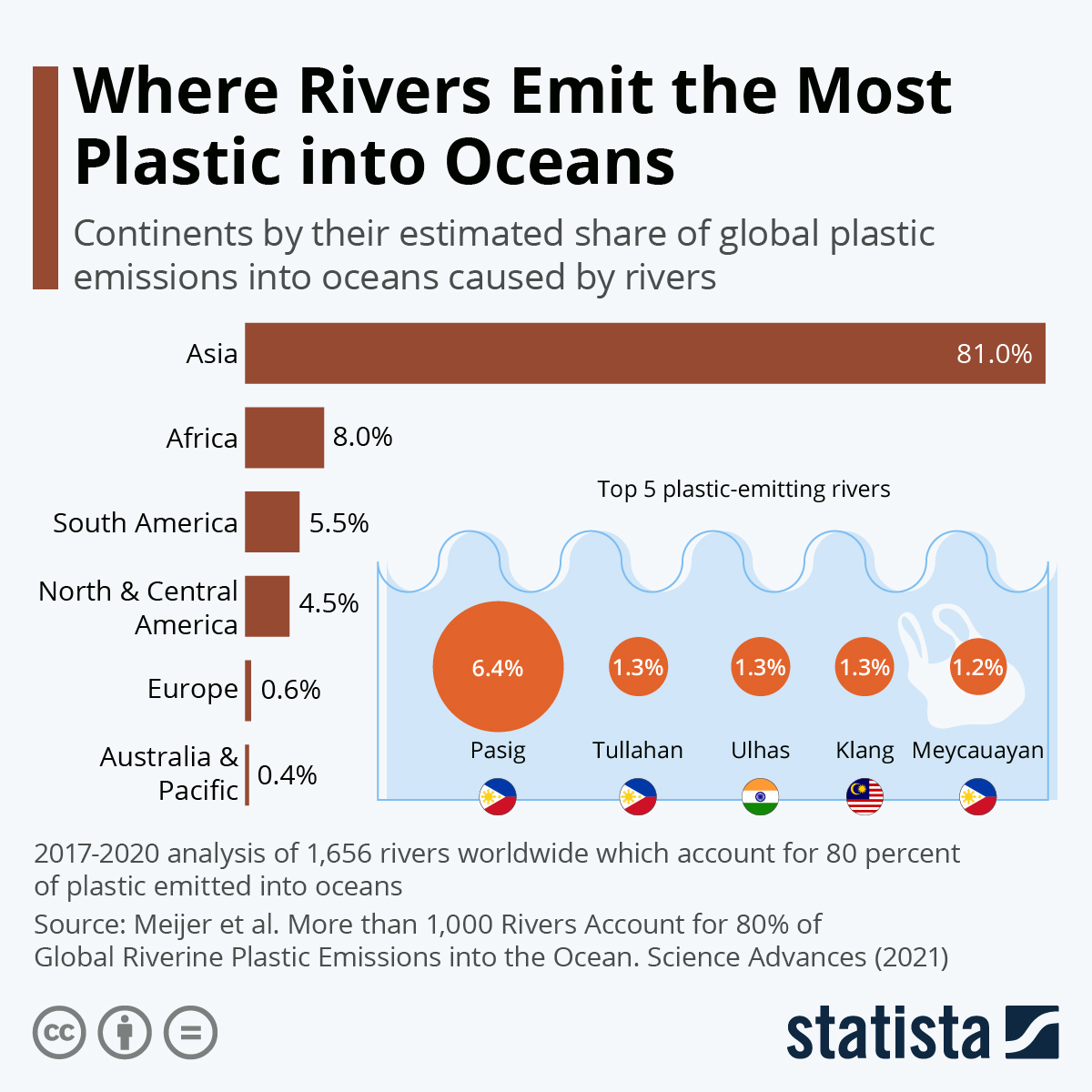Most of the plastic waste that reaches the world's oceans via rivers is emitted in Asian countries. This is shown in data from a recent study by the organization The Ocean Cleanup published in academic journal Science Advances. Asian rivers accounted for 81 percent of riverine plastic emissions in the survey, while the share of all other continents was in the single-digit range.
Between 2017 and 2020, the study examined more than 1,600 rivers worldwide which together make up 80 percent of the total inflow of plastic into the world's oceans. The amount of plastic flushed out per river depends on a number of factors. In addition to the size of the river, these include the population concentration near the river, the economic performance of the surrounding regions and the quality of their waste management. Rivers are by far the biggest factor in plastic inflow to the world’s oceans, according to The Ocean Cleanup, making them crucial places to reign in plastic pollution.
Countries that have long coastlines despite being small landmasses, for example islands or archipelagos, tend to contribute disproportionally to riverine plastic pollution, according to the study. Seven out of the ten rivers which led the most plastic to the sea are in the Philippines, the biggest culprit being the Pasig. The river that flows through Metro Manila was declared biologically dead in 1990 but has since undergone renaturation.
The country as a whole was also named as the biggest contributor to ocean plastic pollution, emitting more than 36 percent of the plastic in the study or 3.3 kg per capita and year – both the highest in the survey. Other countries with high per-capita emission levels were Suriname (2.9 kg), Trinidad and Tobago (2.6 kg) and Malaysia (2.3 kg).





















